Water And Land Temple: Where Nature Meets Spirituality in Ancient China
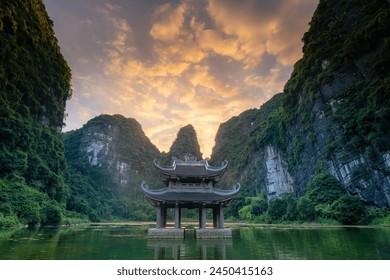
An Essential Guide to Visiting Water And Land Temple
In This Guide
- An Essential Guide to Visiting Water And Land Temple
- The Rich History and Legends of Water And Land Temple
- Main Highlights: What You Absolutely Can’t Miss
- Planning Your Visit: A Practical Guide
- Tickets: Prices, Booking, and Tips
- How to Get There: A Complete Transportation Guide
- Local Cuisine and Accommodation Nearby
- Frequently Asked Questions
- Final Thoughts on Your Trip
Visiting the Water and Land Temple (水陆庵) offers travelers a rare glimpse into the rich tapestry of Chinese spirituality and culture. Nestled in the scenic landscapes of China, this temple stands as a testament to the harmonious relationship between water and land, reflecting the ancient wisdom of Feng Shui and the deep-rooted beliefs in nature’s duality. As one of the significant sites dedicated to various Chinese deities, the Water and Land Temple is not merely an architectural marvel, but also a living sanctuary where rituals and traditions have flourished for centuries.
As you prepare for your journey to this sacred space, it’s essential to understand the historical context and spiritual significance that envelops the temple. The Water and Land Temple is renowned for its elaborate ceremonies that pay homage to both water and land deities, believed to protect and bless the community. Visitors are often enchanted by the intricate carvings, vibrant murals, and the serene ambiance that invites contemplation and reflection.

Water_And_Land_Temple.
Whether you’re an avid history buff, a curious traveler seeking spiritual enrichment, or simply captivated by beautiful landscapes, the Water and Land Temple promises an experience that resonates on many levels. In this guide, we will delve into everything you need to know for a fulfilling visit—from the temple’s fascinating history to practical tips for making the most of your trip. Prepare to be inspired by the beauty and depth of one of China’s hidden gems!
The Rich History and Legends of Water And Land Temple
Nestled within the lush landscapes of southern China, the Water and Land Temple (水陆庵) is a fascinating site steeped in rich history and vibrant legends that reflect the cultural tapestry of the region. This temple, also known as the “Shui Lu An,” serves as a testament to the blending of religious traditions and the reverence for natural elements that define Chinese spirituality.

Water_And_Land_Temple.
A Historical Overview
The Water and Land Temple has origins that date back to the Tang Dynasty (618–907 AD), a period renowned for its cultural and artistic achievements. Initially established as a place of worship for the local deities, the temple evolved over the centuries to accommodate the growing influence of Buddhism and Taoism. It stands as a striking example of how traditional Chinese architecture harmonizes with natural beauty, showcasing intricate carvings and colorful murals that tell the stories of various deities and historical figures.
Throughout the dynasties, the temple served various purposes, from a pilgrimage site for devotees seeking spiritual enlightenment to a refuge for scholars and poets who found inspiration in its serene environment. The temple’s architecture, with its ornate roofs and majestic halls, reflects the grandeur of ancient Chinese civilization and the continuing importance of spirituality in everyday life.
Legends and Myths
Like many historic sites in China, the Water and Land Temple is steeped in legends that add to its allure. One popular tale recounts the story of a wandering monk who, upon discovering the site, was captivated by its natural beauty. It is said that he performed a ritual to honor the water and land spirits, which attracted a following of locals who sought his wisdom and guidance. This event marked the temple’s transformation into a center for spiritual practices, where believers would gather to participate in ceremonies honoring the elements of nature.

Water_And_Land_Temple.
Another legend speaks of the Dragon King, a deity associated with water and rainfall, who is believed to reside in the temple’s sacred waters. According to folklore, during times of drought, locals would hold rituals at the temple to appease the Dragon King, asking for rain to nourish their crops. These ceremonies, rich in symbolism and tradition, highlight the deep connection between the people, their land, and the divine forces they believe govern nature.
Spiritual Significance
Today, the Water and Land Temple continues to be a vibrant center for worship and cultural activities. It hosts various ceremonies throughout the year, including the Water and Land Ceremony, which symbolizes the union of heaven and earth and is believed to bring blessings and prosperity to the community. This event draws visitors from near and far, eager to witness the intricate rituals that honor the temple’s rich history and spiritual significance.
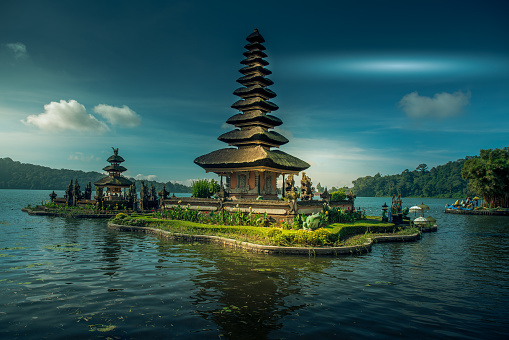
Water_And_Land_Temple.
Visitors to the temple can also engage with local practitioners, who are happy to share their knowledge about the customs and beliefs associated with the site. The atmosphere is often filled with the scent of incense and the sounds of chanting, creating a profound sense of tranquility that invites reflection and introspection.
Conclusion
Exploring the Water and Land Temple is not merely a visit to a historical site; it is an opportunity to connect with the living traditions of Chinese culture. The temple’s rich history and the legends that surround it provide a unique insight into the spiritual landscape of China. Whether you are a history buff, a cultural enthusiast, or simply a curious traveler, the Water and Land Temple promises an enriching experience that resonates with the heart and soul of this ancient civilization.
Main Highlights: What You Absolutely Can’t Miss
When exploring the Water and Land Temple (水陆庵), a treasure trove of Chinese cultural heritage, there are several extraordinary highlights that you simply cannot miss. Nestled in the heart of Chinese spirituality and architecture, this temple offers a unique glimpse into the rich tapestry of Taoist and Buddhist traditions. Here’s your essential guide to the main highlights:
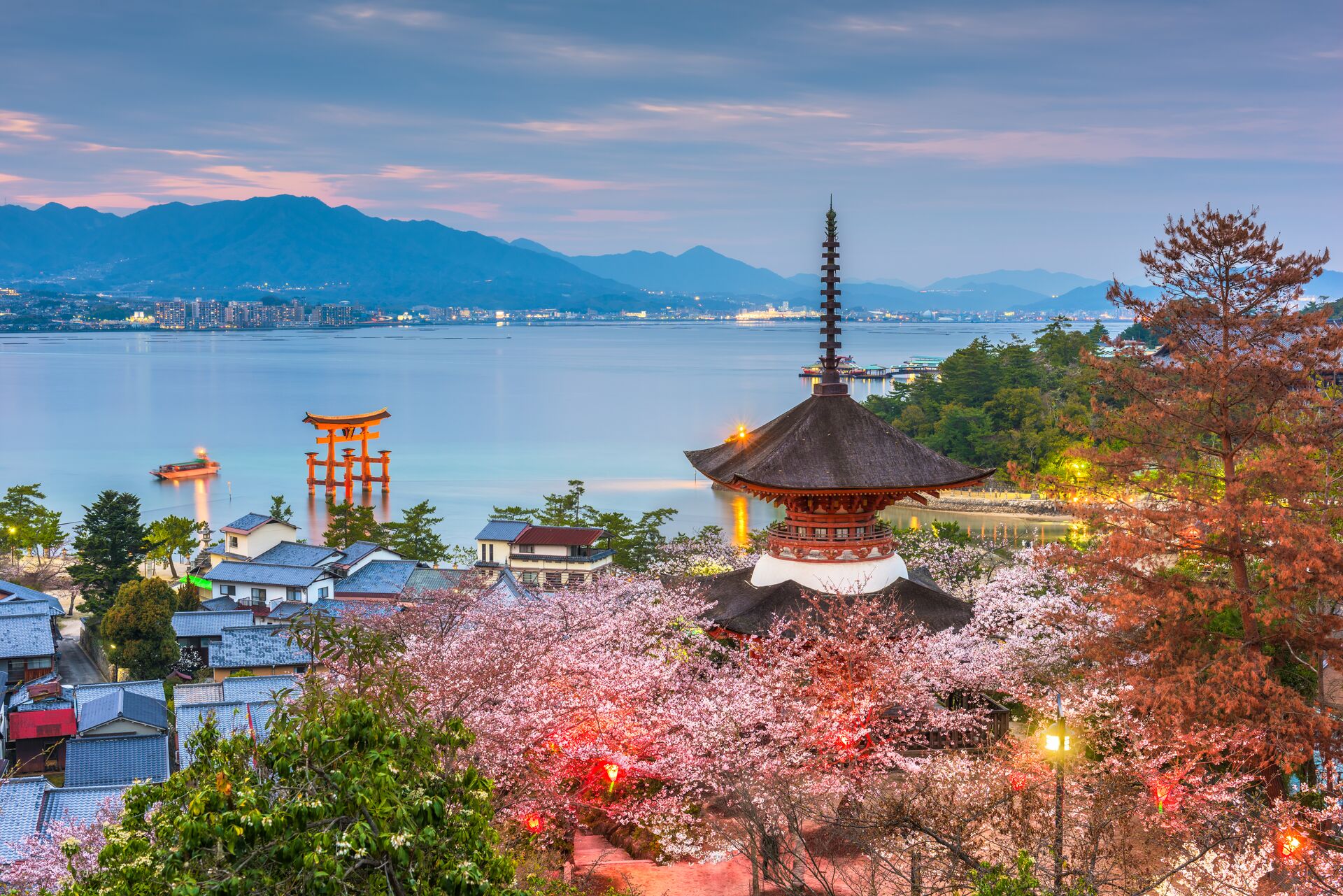
Water_And_Land_Temple.
Historical Significance
A Living Heritage
The Water and Land Temple is more than just a place of worship; it embodies centuries of spiritual practices and rituals. Originally constructed during the Tang Dynasty, this temple reflects the evolution of Chinese religious architecture and serves as a center for Taoist and Buddhist ceremonies. The temple is renowned for its intricate design and is a testament to the artistic prowess of ancient Chinese craftsmen.
Architectural Marvels
Stunning Facades and Statues
As you approach the temple, take a moment to admire the ornate facades adorned with colorful carvings and intricate sculptures. Each detail is imbued with symbolism, representing various deities and mythological figures. The main hall, with its towering wooden beams and delicate murals, offers a serene atmosphere that invites contemplation and reverence.

Water_And_Land_Temple.
Rituals and Ceremonies
Experience the Spirituality
One of the most captivating aspects of the Water and Land Temple is the opportunity to witness traditional rituals. From engaging in prayer to observing local devotees making offerings, you’ll gain insight into the spiritual practices that have been preserved through generations. Be sure to check the temple’s schedule for special ceremonies, as attending one can be a profoundly moving experience.
Scenic Surroundings
Nature’s Embrace
The temple is set against a backdrop of lush greenery and tranquil water features, creating an idyllic setting for reflection and meditation. Take a leisurely stroll around the temple grounds to appreciate the harmony between nature and architecture. The nearby lotus ponds are particularly picturesque, especially during bloom, when they add a splash of color to the serene landscape.
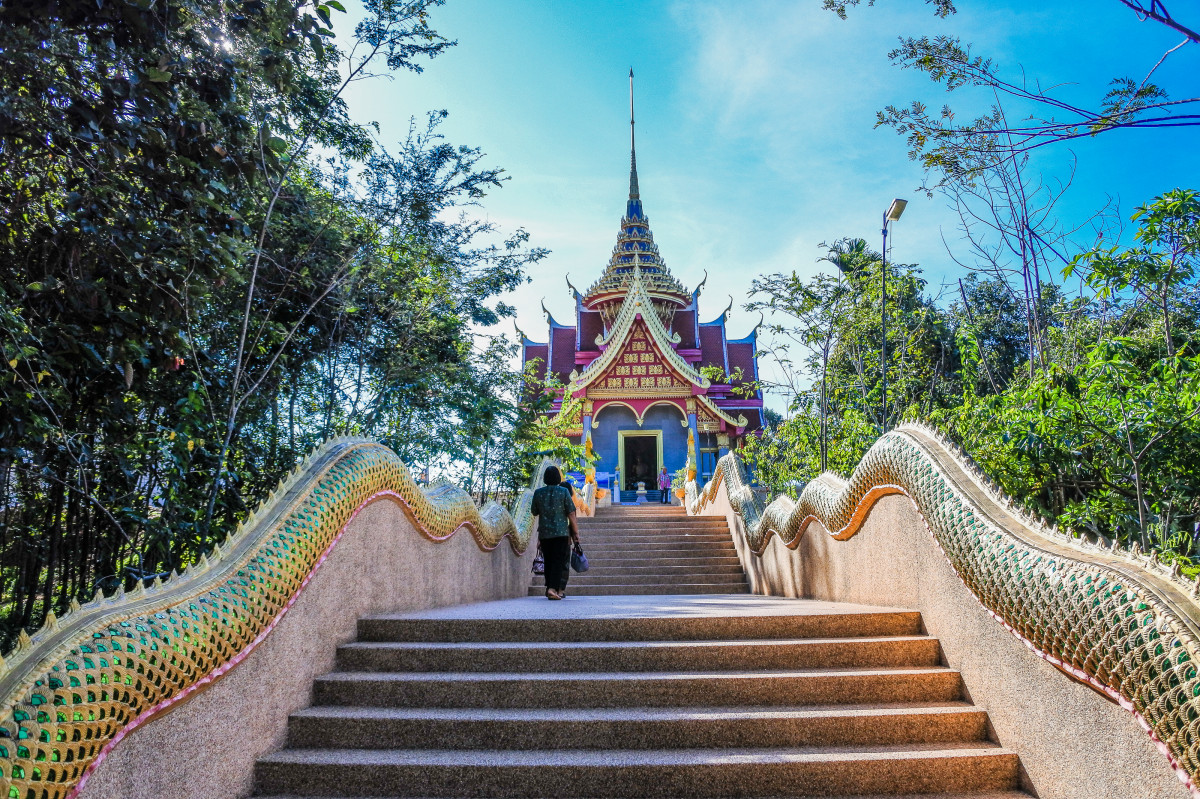
Water_And_Land_Temple.
Cultural Activities
Engage with Local Traditions
Immerse yourself in the local culture by participating in activities offered at the temple. Many temples host workshops where you can learn about traditional calligraphy, tea ceremonies, or even the art of lantern making. These hands-on experiences provide a deeper understanding of the cultural practices that surround the temple.
Photography Opportunities
Capture the Essence
The Water and Land Temple is a photographer’s paradise. Whether it’s the golden hues of dawn illuminating the temple’s roof or the vivid colors of festivals, there are countless opportunities to capture breathtaking images. For the best light, consider visiting early in the morning or during the golden hour just before sunset when the temple is bathed in a warm glow.
Nearby Attractions
Extend Your Exploration
While the Water and Land Temple is a highlight in its own right, the surrounding area is also rich with attractions. Consider visiting other historical sites or local markets nearby to enhance your cultural experience. Sampling traditional snacks or purchasing handmade crafts from local artisans can be a delightful addition to your visit.

Water_And_Land_Temple.
Final Tips
Respect and Reverence
As you explore the temple, remember that this is a sacred site. Dress modestly and be respectful of the local customs. Engaging with the environment and its people with an open heart and mind will enrich your experience and honor the traditions that this temple represents.
Visiting the Water and Land Temple promises to be an unforgettable journey into the heart of Chinese culture and spirituality. From its architectural beauty to the depth of its rituals, each moment spent here is an invitation to connect with the past and the present.
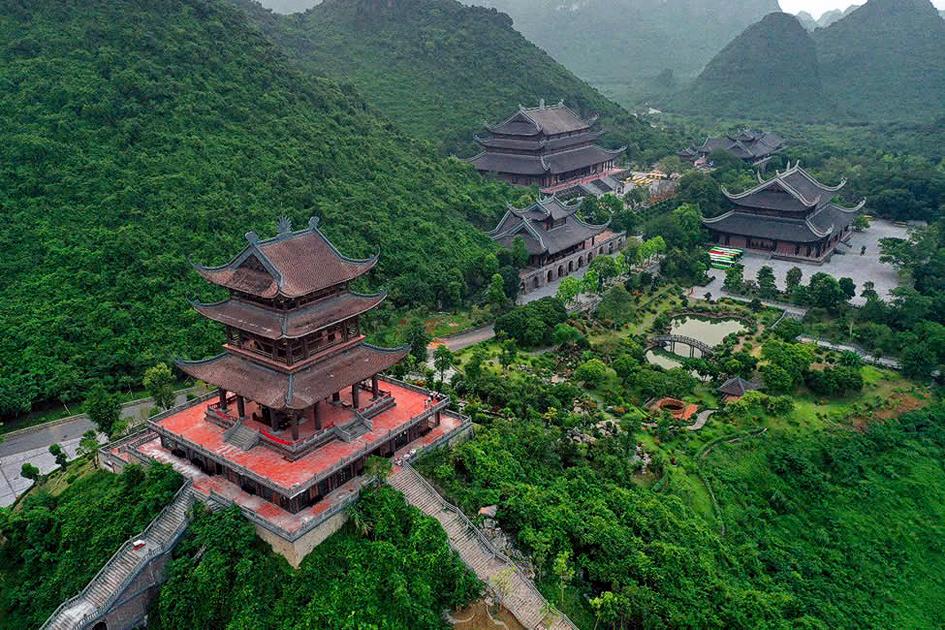
Water_And_Land_Temple.
Planning Your Visit: A Practical Guide
Essential Information for Visiting the Water and Land Temple (水陆庵)
When planning your visit to the Water and Land Temple, a site steeped in history and cultural significance, it’s vital to have a well-rounded understanding of what to expect. This guide will help ensure your experience is both fulfilling and respectful.
Historical Context and Significance
The Water and Land Temple, known as 水陆庵 (Shuǐ Lù Ān) in Mandarin, is a remarkable establishment that symbolizes the harmonious relationship between water and land in Chinese spirituality. This temple is dedicated to the worship of various deities, including those of water and land, and serves as a venue for significant religious ceremonies. Understanding the temple’s historical context enhances your appreciation of its architectural beauty and cultural relevance.
Best Times to Visit
Timing Your Visit:
– Early Morning: For a serene experience, consider visiting early in the morning. The peaceful ambiance allows for reflection and exploration without the hustle and bustle of larger crowds.
– Late Afternoon: If you prefer to catch the sunset, arrive a couple of hours before dusk. However, be prepared for an influx of visitors during this peak time.
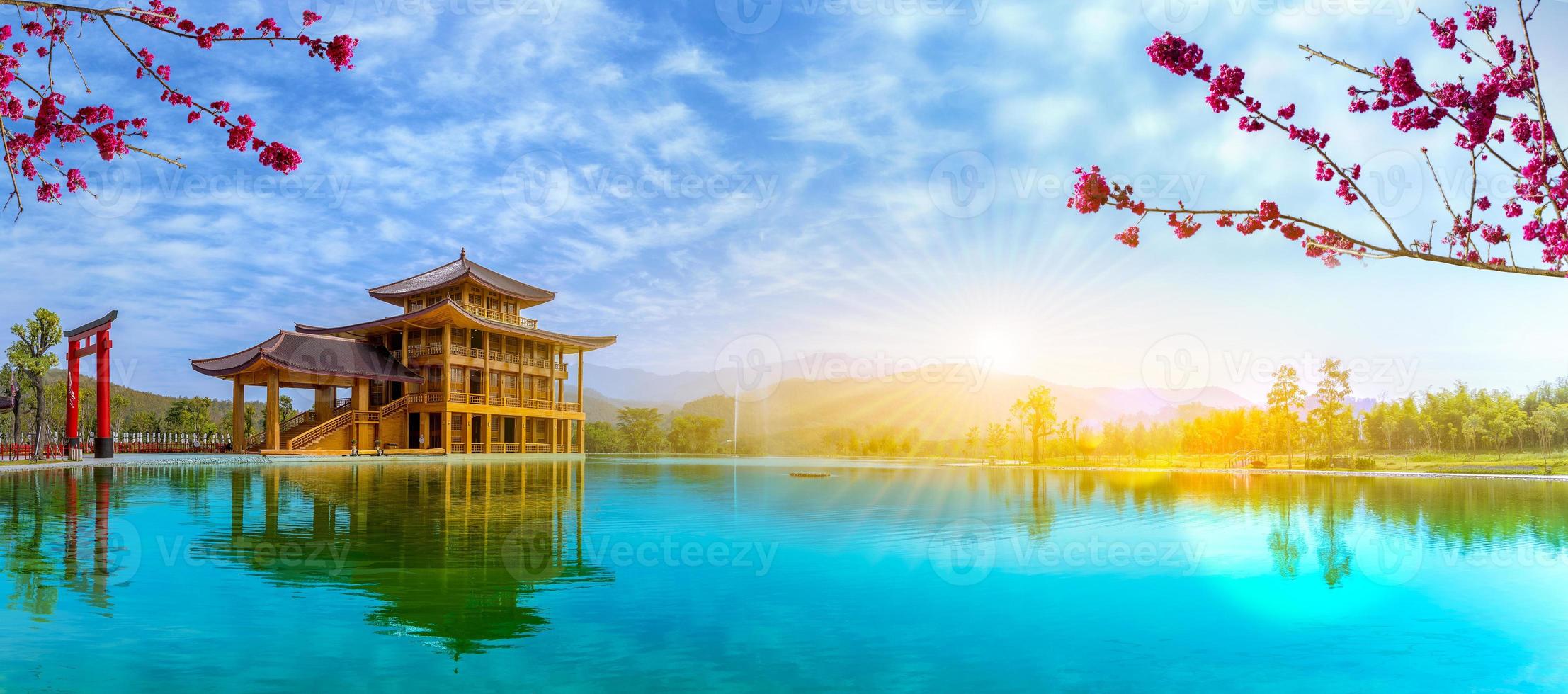
Water_And_Land_Temple.
Crowd Management:
If you’re sensitive to busy environments, aim for a mid-week visit, avoiding weekends when local worshippers and tourists flock to the temple.
Getting There: Transportation Options
Location: The Water and Land Temple is situated in a scenic area that is accessible by various means of transportation.
- Public Transport: Buses or local taxis can take you to the nearest drop-off point, from which you may need to walk a short distance to the temple.
- Private Car or Driver: Hiring a private driver offers a comfortable and hassle-free way to explore the area. This option allows you to enjoy the surroundings at your leisure without the stress of navigation.
- Walking and Cycling: If you’re nearby, walking or cycling can be a delightful way to absorb the local scenery.

Water_And_Land_Temple.
Entrance Fees and What to Expect
- Entrance Fee: As of your visit, the entrance fee is generally around 30 RMB for adults and 15 RMB for children, providing access to the temple grounds and surrounding areas.
- Facilities: Expect well-maintained pathways leading to the temple, along with rest areas and refreshment stalls. Be sure to sample local snacks available from vendors.
Respecting Local Culture and Customs
The Water and Land Temple is not just a tourist attraction; it is a functioning spiritual site. Here are some essential guidelines:
- Dress Appropriately: Visitors should dress modestly, avoiding revealing clothing. A light shawl or sarong is often recommended. Many temples provide rental options.
- Photography Etiquette: While capturing the beauty of the temple is encouraged, be mindful of worshippers. Avoid using flash and refrain from photographing during prayer ceremonies.
- Quiet Reflection: Maintain a respectful demeanor. Speak softly and allow space for those engaged in worship.

Water_And_Land_Temple.
Additional Attractions Nearby
The area surrounding the Water and Land Temple is rich with cultural experiences:
- Local Markets: Explore nearby markets for unique souvenirs and local crafts, from silk products to hand-painted ceramics.
- Scenic Walks: Take a stroll along the paths that lead to picturesque viewpoints overlooking the surrounding landscape.
- Cultural Performances: Check for any scheduled performances, such as traditional music or dance, which often take place in the evenings.
Practical Tips for Your Visit
- Hydration and Sun Protection: Bring water and sunscreen, as shaded areas are limited.
- Comfortable Footwear: Wear sturdy shoes, especially if you plan to explore rocky or uneven terrain.
- Visit During Off-Peak Hours: As mentioned, early morning or late afternoon visits allow for a more personal experience.
Conclusion
Your visit to the Water and Land Temple (水陆庵) can be a profound experience, offering a glimpse into the rich tapestry of Chinese culture and spirituality. By preparing adequately and respecting local customs, you’ll ensure that your journey is both enjoyable and enlightening. Safe travels!
Tickets: Prices, Booking, and Tips
When planning your visit to the Water and Land Temple (水陆庵), it’s essential to be informed about the ticketing process, pricing, and some practical tips to enhance your experience. This temple, steeped in history and cultural significance, attracts visitors from around the globe, and knowing what to expect can make your trip even more rewarding.
Ticket Prices
As of the latest information, the entrance fees for the Water and Land Temple are as follows:
– Adults: Approximately 30 CNY (around $4.50 USD)
– Children: Approximately 15 CNY (around $2.25 USD)
These prices grant you access to the temple grounds and the surrounding areas, where you can explore the beautiful architecture and tranquil scenery that make this site so enchanting.
Booking Your Visit
While you can purchase tickets at the entrance, it’s advisable to arrive early, especially during peak tourist seasons. Here are some options for securing your tickets:
-
On-Site Purchase: Tickets can be bought directly when you arrive. To avoid long queues, try to visit early in the morning or during off-peak hours.
-
Online Booking: Some travel agencies or platforms may offer online booking services for a slight convenience fee. This option can save you time and ensure you have your entry secured, especially if you’re visiting during a busy period.
Tips for a Smooth Experience
-
Arrive Early or Late: If you prefer a quieter experience, consider visiting during the early morning or late afternoon. These times not only provide a peaceful atmosphere but also offer stunning lighting for photographs.
-
Dress Respectfully: As a sacred site, visitors are encouraged to dress modestly. Lightweight, breathable clothing is appropriate, and if you’re unsure, a sarong can be rented or purchased at the entrance.
-
Stay Hydrated and Protected: Bring water and sunscreen to shield yourself from the sun, particularly if you plan to explore the grounds extensively. A hat and sunglasses can also help keep you comfortable.
-
Explore the Surroundings: Don’t rush your visit. Take time to wander around the temple grounds, enjoy the scenery, and absorb the spiritual ambiance. There are often smaller shrines and beautiful gardens to discover.
-
Respect the Local Culture: Remember that the Water and Land Temple is an active place of worship. Be mindful of local customs and ceremonies, and avoid interrupting those who are there to pray.
-
Photography Etiquette: The temple’s stunning architecture and serene surroundings make it a perfect spot for photography. However, respect the privacy of worshippers and consider their presence when setting up shots.
By keeping these ticketing details and tips in mind, your visit to the Water and Land Temple will be both enjoyable and enriching, allowing you to fully appreciate its historical and cultural significance.
How to Get There: A Complete Transportation Guide
Journey to Water and Land Temple: Your Transportation Guide
Visiting the Water and Land Temple (水陆庵), nestled in the scenic surroundings of Hangzhou, is a journey steeped in cultural significance and historical richness. As you prepare for your visit, understanding how to navigate your way there will enhance your experience. Here’s a comprehensive guide on transportation options to make your journey seamless.
Getting There by Air
Major Airports:
- Hangzhou Xiaoshan International Airport (HGH): The nearest airport, located about 30 kilometers (18 miles) from the temple. This airport connects with major cities worldwide and offers both domestic and international flights.
From the Airport
- Taxi:
-
Taxis are readily available outside the terminal. The journey to the temple takes approximately 40 minutes, depending on traffic. Expect to pay around ¥100-¥150 (approximately $15-$23).
-
Airport Shuttle Bus:
-
The airport operates shuttle buses to various parts of Hangzhou. You can take a bus to the city center and then switch to a local bus or taxi to reach the temple.
-
Car Rental:
- If you prefer to drive, several car rental companies operate at the airport. Driving can give you the freedom to explore the surrounding areas at your leisure.
Getting There by Train
High-Speed Rail:
– Hangzhou Railway Station is a major hub for high-speed trains connecting to cities like Shanghai, Nanjing, and Suzhou. If you’re traveling from one of these cities, take a high-speed train to Hangzhou.
From the Train Station:
– Taxi: Taxis are available at the station, and the ride to the Water and Land Temple will take about 25 minutes, costing around ¥30-¥50 (approximately $5-$8).
– Public Bus: Bus lines 27 and 70 can take you close to the temple. Check local transit apps for the most convenient routes.
Public Transport and Local Travel Options
Local Buses:
– Hangzhou boasts an efficient public transportation system. You can take buses that connect directly to the temple. Line 33 and Line 141 are two options that stop near the Water and Land Temple. Always check the latest schedules and routes online or via local transit apps.
Biking:
– For the more adventurous traveler, Hangzhou is bike-friendly. You can rent a bike from one of the many bike-sharing services available throughout the city. The scenic ride to the temple can be a delightful experience, allowing you to soak in the beauty of Hangzhou’s landscapes.
Driving Directions
If you’re driving, here’s how to navigate to the Water and Land Temple:
- From Hangzhou City Center:
- Head southeast on Zhongshan Road.
- Merge onto G25 (Huhang Expressway) and follow the signs for Hangzhou West Railway Station.
-
Take Exit 30 toward Xihu District, and follow local signs to the temple.
-
Parking:
- There is parking available near the temple, but it can fill up quickly, especially on weekends and holidays. Arrive early to secure a spot.
Best Time to Visit
For the most enjoyable experience, consider timing your visit strategically. The temple is particularly beautiful in the early morning or late afternoon. If you wish to avoid crowds, aim to arrive during these times. Additionally, checking local traffic conditions can help you avoid peak hours.
Tips for a Smooth Journey
- Language: While many signs are in English, having a translation app can help if you encounter language barriers.
- Cash: Keep some cash on hand for small purchases or local transport since not all places accept credit cards.
- Weather: Check the weather forecast before you travel, as conditions can affect transportation options.
By planning your journey to the Water and Land Temple thoughtfully, you will not only arrive at this historic site with ease but also enhance your overall travel experience. Enjoy your visit, and immerse yourself in the rich cultural tapestry that this remarkable temple has to offer!
Local Cuisine and Accommodation Nearby
When visiting the Water and Land Temple (水陆庵), immersing yourself in the local cuisine and finding a comfortable place to stay can enhance your experience significantly. Here’s a guide to savoring the flavors and comforts near this historic site.
Culinary Delights
1. Vegetarian Offerings at Local Eateries
Given the temple’s spiritual significance, many nearby restaurants focus on vegetarian cuisine, reflecting Buddhist principles. Don’t miss out on:
-
Noodle House: Known for its hand-pulled noodles, this quaint spot serves up dishes like Buddha’s Delight, a medley of seasonal vegetables and tofu in a savory sauce. Pair it with Chrysanthemum tea for a refreshing experience.
-
Lotus Vegetarian Restaurant: This restaurant offers a serene dining atmosphere with a menu full of vegetable-based dishes, including Mapo Tofu and Vegetable Stir-Fry. Their tofu skin rolls are a must-try!
2. Local Snacks and Street Food
As you explore the temple grounds, be sure to sample some delicious street food:
-
Jianbing (煎饼): A savory Chinese crepe filled with egg, scallions, and various fillings, perfect for a quick snack.
-
Tanghulu (糖葫芦): Skewered fruit, often coated in a crunchy sugar glaze, is a delightful sweet treat that’s fun to munch on while soaking in the temple’s ambiance.
3. Traditional Tea Houses
Experience the calming ritual of tea-drinking at a nearby tea house. Many offer Chinese tea ceremonies, where you can sample various types of tea, such as Oolong or Pu-erh, paired with light snacks like mooncakes or tea-infused cookies.
Accommodation Options
1. Local Guesthouses
For a more authentic experience, consider staying at a local guesthouse. They often feature traditional decor and personalized service:
-
Serene Stay Guesthouse: This cozy establishment is just a short walk from the temple. Enjoy spacious rooms, complimentary breakfast, and friendly hosts who can share insights about local culture.
-
The Tranquil Inn: Nestled in a quiet area, this inn offers comfortable rooms with beautiful views of the surrounding landscape. The on-site restaurant serves a delightful breakfast with local specialties.
2. Boutique Hotels
For those seeking modern amenities combined with cultural elements, boutique hotels provide a perfect balance:
-
Harmony Hotel: This stylish hotel is designed with traditional Chinese architecture and offers luxury amenities, including a spa and a rooftop terrace with stunning views of the temple. Their in-house restaurant serves a fusion of local and international cuisine.
-
Lotus Blossom Hotel: Located within a short distance from the temple, it boasts elegantly decorated rooms and offers guided tours of the temple and its surroundings. The hotel also features a lovely garden cafe perfect for evening tea.
3. Budget-Friendly Hostels
If you’re traveling on a budget, several hostels provide a welcoming atmosphere for travelers:
-
Cultural Exchange Hostel: This vibrant spot is ideal for solo travelers and backpackers. It offers dormitory-style accommodation and a communal kitchen, perfect for meeting fellow travelers. Don’t forget to join their evening tours to explore local food markets.
-
Backpacker’s Haven: Located a bit farther from the temple, this hostel is known for its cleanliness and friendly staff. They often organize day trips to local attractions, making it a great base for exploring the area.
Final Thoughts
Whether you’re savoring the rich flavors of local cuisine or resting in a cozy accommodation, the experience around the Water and Land Temple (水陆庵) is sure to be memorable. Don’t rush your visit; take the time to enjoy the local culture, which will deepen your appreciation for this significant historical site.
Frequently Asked Questions
Frequently Asked Questions about Water And Land Temple (水陆庵)
1. What is the Water And Land Temple and why is it significant?
The Water And Land Temple, or 水陆庵 (Shuǐlù ān), is a prominent Buddhist temple located in China, known for its unique combination of land and water rituals during religious ceremonies. It serves as a spiritual center for worshippers seeking blessings for the living and the deceased, emphasizing the balance between earthly and spiritual realms.
2. What can I expect when visiting the temple?
Visitors to the Water And Land Temple can expect a serene atmosphere filled with rich cultural and historical significance. The temple features traditional architecture, intricate sculptures, and beautifully landscaped gardens. It is a vibrant place of worship where you can witness local rituals and ceremonies, providing an immersive experience into Chinese Buddhist practices.
3. Are there any entrance fees?
Yes, there is usually a nominal entrance fee to access the temple grounds. The fee helps maintain the site and can vary based on special events or festivals. It is advisable to check the temple’s official website or local resources for the latest information on entrance fees and any special ceremonies you might want to attend.
4. What are the best times to visit the Water And Land Temple?
To enjoy a peaceful visit, it’s best to arrive early in the morning or later in the afternoon. Mornings are particularly tranquil, allowing you to explore the temple’s beauty before crowds arrive. If you’re interested in experiencing ceremonies, consider visiting during the temple’s key festivals, when vibrant celebrations take place.
5. How do I get to the Water And Land Temple?
The Water And Land Temple is easily accessible via public transportation or taxi services. If you’re staying in the city, inquire about local bus routes or ride-sharing options to ensure a hassle-free journey. For those who prefer a guided experience, many local tours include transportation to the temple.
6. What should I wear when visiting the temple?
Visitors are encouraged to dress modestly and respectfully, as the Water And Land Temple is a place of worship. Lightweight, breathable clothing is advisable due to the often warm climate, but avoid shorts and sleeveless tops. If needed, you may find sarongs available for rent or purchase at the temple entrance.
7. Can I take photos inside the temple?
Photography policies can vary, so it’s essential to pay attention to signage regarding photography rules. Generally, you may take photos in public areas, but be respectful of worshippers and avoid using flash during ceremonies. Always ask permission before capturing images of individuals, particularly monks or locals engaged in prayer.
8. Are there any nearby attractions to explore after visiting the temple?
Yes, the area surrounding the Water And Land Temple is rich in historical and cultural sites. Consider visiting nearby parks, traditional markets, or other temples. Engaging with local artisans or sampling regional cuisine at nearby eateries can enhance your overall experience and provide a deeper understanding of the local culture.
Final Thoughts on Your Trip
As you wrap up your journey to the Water and Land Temple (水陆庵), take a moment to reflect on the rich tapestry of history, culture, and spirituality that this sacred site embodies. Nestled within the bustling life of modern China, the temple serves as a serene reminder of the ancient traditions that have shaped the nation and its people.
Embrace the Experience
Visiting the Water and Land Temple is more than just a sightseeing excursion; it’s an invitation to immerse yourself in the rhythms of a living culture. Here, you can witness the harmonious blend of nature and spirituality, where the tranquil waters and lush landscapes invite introspection and reverence. Whether you’re standing beneath the temple’s intricate eaves or wandering the serene gardens, every moment spent here is a chance to connect with the profound heritage of Chinese Buddhism.
Cherish the Lessons Learned
Throughout your visit, you may have encountered local practitioners engaged in rituals, offering a glimpse into the continuing faith that surrounds this temple. Respect their space and soak in the atmosphere; it’s a unique opportunity to witness devotion in action. Remember to approach photography with sensitivity, capturing the beauty of the temple while honoring its sacredness.
Take Home More Than Souvenirs
As you prepare to leave, consider what you’ll take away from this experience beyond the photographs and mementos. Perhaps it’s a newfound appreciation for the depth of Chinese spirituality, or a desire to learn more about the philosophies that have guided its people for centuries.
A Journey Worth Taking
In conclusion, the Water and Land Temple is a testament to the enduring power of faith, culture, and history. It beckons you to return, inviting you to delve deeper into the stories of the past that continue to resonate in the present. So, as you embark on your next adventure, carry the serenity of this temple within you, and let it inspire your journey through the rich tapestry of our world.